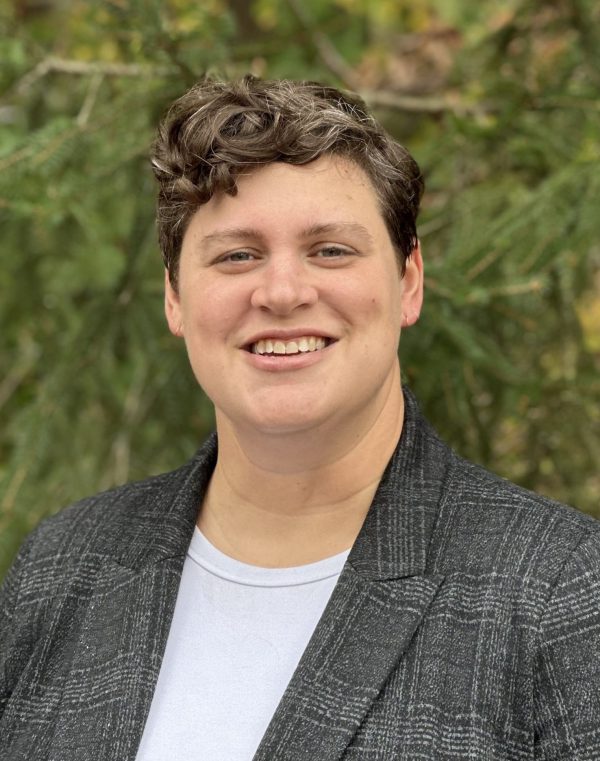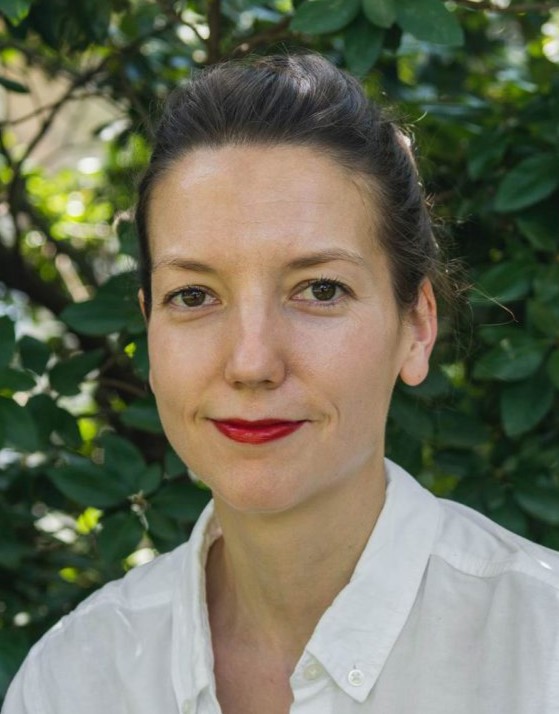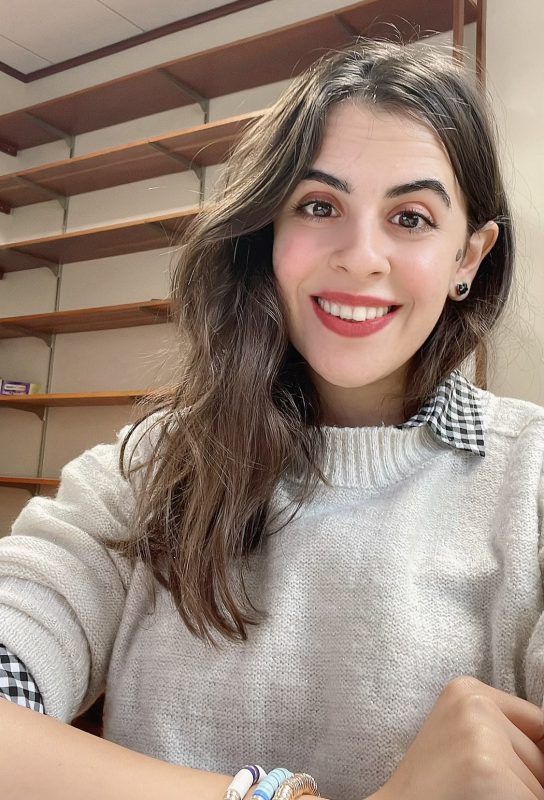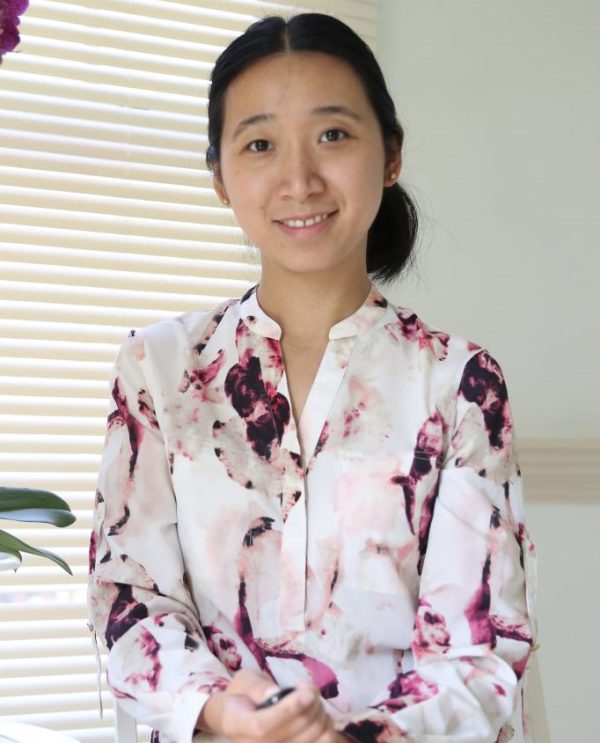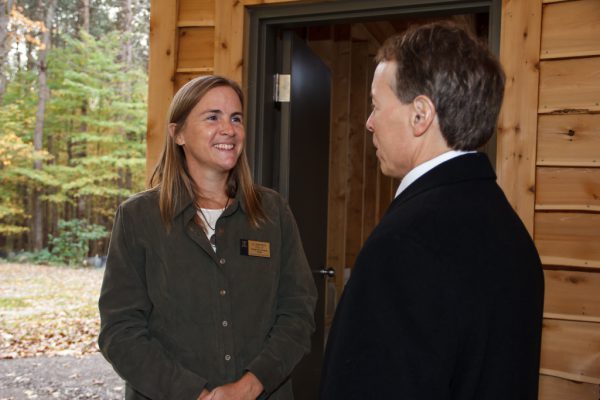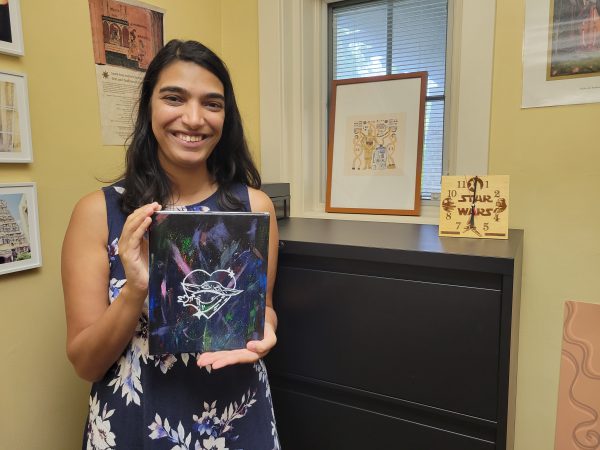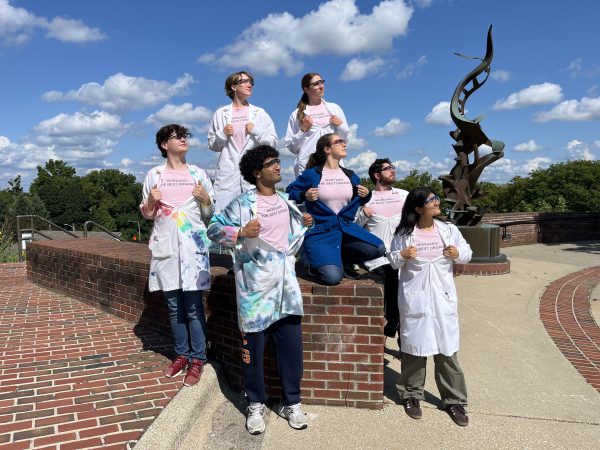Maxwell Rhames ’25 and Daniela Arias-Rotondo, Kalamazoo College’s Roger F. and Harriet G. Varney Endowed Chair in Natural Science, are receiving national recognition for their three years of work together that culminated in Rhames’ Senior Integrated Project (SIP).
Arias-Rotondo’s synthetic inorganic chemistry lab works to find ways of converting light into energy. In Rhames’ SIP, that meant examining what alternative metals could possibly be used to make things like solar panels less expensive, one day assisting a global shift toward renewable energy.
“When you have some sort of inorganic complex that absorbs light, that light can get transformed into chemical energy in the form of electricity,” Rhames said. “A common example is with solar panels, but the metals that they use in them are rare, and as a result, incredibly expensive. We were looking at taking some cheaper metals that you could find anywhere in a much more sustainable way and asking whether they can work.”
For their efforts, the two have received an honorable mention in the 2024 Division of Inorganic Chemistry Award for Undergraduate Research, which recognizes research that students and faculty perform in tandem. The award, given through the American Chemical Society, has three divisions between national labs, research universities and institutions that primarily consist of undergraduates. Rhames and Arias-Rotondo were honored in the primarily-undergraduates category, which covers scientists from hundreds of schools across the country.
“The traditional photoactive metals are iridium and ruthenium, and we’re looking at manganese, which is the third-most abundant transition metal on Earth,” Rhames said. “In the state we use it in, it’s stable and nontoxic, so it’s a great alternative. We’re looking at how we can bridge the gap between saying, ‘this could be really cool,’ and actually getting it to where we could apply it in some of these areas.”
Arias-Rotondo said she and Rhames use spectroscopy to understand what kind of light the compounds they create absorb and what happens after they absorb it.

“One of the problems that we’re finding is that once our compounds absorb light and get to what we call an excited state, that excited state doesn’t last long enough yet for them to be useful,” she said. “But Max’s work has been instrumental because he was the first one in the group to make these kinds of compounds. Now that we’ve been able to understand their properties and investigate some of them, other students in our lab can understand how to make them better. We are making a name for ourselves by laying the groundwork for making these compounds.”
Rhames has discussed his SIP at the Inter-American Photochemical Society and American Chemical Society conferences, where his fellow scientists were enthused about his work on a national scale.
“That’s been the coolest thing, because when you put something out there, you don’t know what people are going to think of it,” he said. “And generally, their reactions have been super rewarding. I enjoy doing the work myself, but it’s even cooler to know that other people find it equally exciting. It’s an added bonus.”
Rhames won’t be the first or the last in his family to graduate from K when he walks the stage at Commencement in June. Both of his parents, Frank ’92 and Jody ’92, are alumni, and his sister, Claire ’27, is a current student. However, he’s clearly found his own path having performed research in Arias-Rotondo’s lab ever since his first year on campus. In addition, he will start a Ph.D. program at the University of Delaware in fall, and he hopes to one day serve as a faculty member at an institution like K.
“K is small, so you get to make a lot of good connections with your professors,” Rhames said. “I was three or four weeks into my first term as a college student, and all of a sudden, I’m in a lab doing the work with the research. There are no post-docs or graduate students. It is just the undergraduates and the faculty doing all of the work. That would’ve been a lot harder to do had I not gone to K.”







